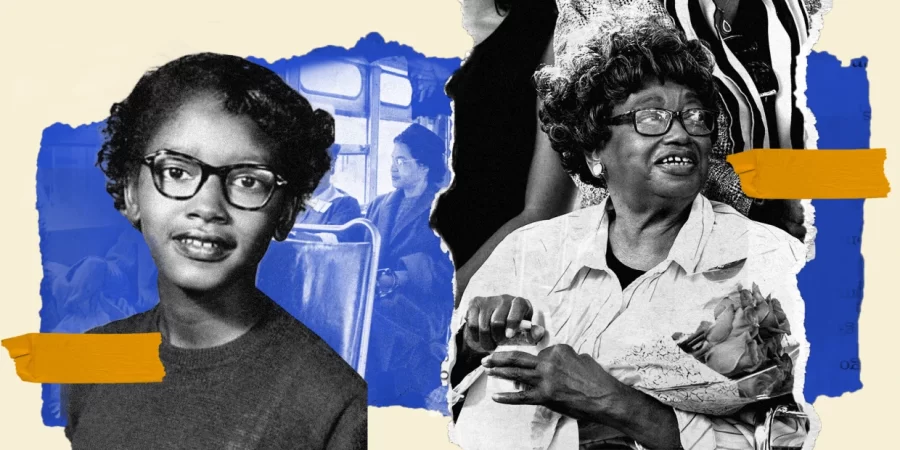Claudette Colvin

Biography
Before Rosa Parks made headlines, a 15-year-old high school student named Claudette Colvin sat her truth right into history and refused to move. It was March 2, 1955, and Colvin, a straight-A student and active member of the NAACP Youth Council, had just finished studying Black history in school. When the bus driver told her to move for a white passenger, she said no. Not out of rebellion, but out of conviction. 'I felt like Sojourner Truth was pushing down on one shoulder and Harriet Tubman on the other,' she later said. 'I was glued to my seat.'
Her stand—or rather, her sit—led to her arrest. She was thrown in jail, scared and alone, charged with violating segregation laws and resisting arrest. While the law said passengers didn’t have to move if the bus wasn’t full, white supremacy didn’t care about legal nuance. Colvin was not just arrested, she was labeled a troublemaker, and her dreams of becoming a lawyer started slipping away. The NAACP initially considered using her case to challenge bus segregation, but felt she didn’t fit the image the movement leaders believed they needed.
When the lawsuit Browder v. Gayle was filed to challenge Montgomery’s bus segregation, Colvin was one of the four brave Black women whose names were on the line. That case went all the way to the Supreme Court and won. The 1956 ruling declared bus segregation unconstitutional, effectively ending the practice in Montgomery. Claudette’s fingerprints were all over one of the most significant legal victories of the movement, even if the history books left her name out.
After the ruling, Claudette moved to New York City, raised two sons, and worked quietly as a nurse’s aide for decades. She retired in 2004. While others received medals and museum exhibits, Claudette remained mostly in the shadows. But slowly, her story has resurfaced. Authors, poets, and performers have begun to lift her name back into public memory, where it belongs. In Claudette Colvin: Twice Toward Justice, Phillip Hoose chronicles her courage and the price she paid for doing what was right before it was popular.
Claudette Colvin’s legacy is a reminder that revolutions aren’t built on perfect timing or polished images. They’re built on everyday people doing brave things in extraordinary moments. She stood up by sitting down—and history moved because of it. As she once said, 'When it comes to justice, there is no easy way to get it. You have to take a stand and say, This is not right.' And that’s exactly what she did. At 15 years old. On a city bus. In a city that wasn’t ready—but a movement that was just beginning.
Claudette Colvin’s story is a reminder that history is shaped not just by the well-known figures in textbooks, but by countless individuals who resist injustice in ways big and small. Her courage as a teenager laid the foundation for a movement that would change the course of American history. Yet, her erasure from mainstream narratives reflects the uncomfortable truths about race, gender, and whose voices are elevated in historical memory. Learning her story is an act of justice. It teaches us the power of young people in movements, the necessity of speaking out even when recognition does not follow, and the ongoing fight for equity in the face of systemic oppression.
?
Why do you think Claudette Colvin’s story is less well-known than Rosa Parks’?
What does Claudette’s story teach us about the role of young people in creating change?
How do the struggles faced by civil rights activists in the past compare to the fight for social justice today?
What injustices in today’s world do you think deserve more attention, and how can we make sure those stories are told?
Dig Deeper
Around the same time Rosa Parks famously protested segregation by refusing to give up her bus seat to a white passenger, a teenager named Claudette Colvin went to jail in Montgomery, Ala., for doing the exact same thing. This is her story.
Discover more

Rosa Parks
Rosa Parks did not simply stay seated because she was tired—she sat down and refused to move because she was tired of giving in.

Bayard Rustin
Bayard Rustin was the brilliant strategist behind the 1963 March on Washington and a key advisor to Martin Luther King Jr.

Langston Hughes
Poet, playwright, novelist, and one of the most influential voices of the Harlem Renaissance, Langston Hughes used his work to capture the essence of Black American life.
Further Reading
Stay curious!
